by Jason Kearney, BA Photography student, DIT
As part of our third year in college, we had the option to study the archive in context – a progression from an earlier module in which we studied the theoretical aspects of the archive. To put these theories into practice and also out of a sense of curiosity surrounding the inner workings of the National Library of Ireland’s (NLI) National Photographic Archive (NPA), I put myself forward for the 12 week module. It was both an opportunity to try something new outside of the classroom and to gain experience that would be valuable in the future, given that archiving in general is receiving more prominence these days with the advent of an ever-expanding public digital database.
The module began with a discussion involving Elizabeth Kirwan, curator at the NPA and Matthew Cains, Conservator at the NLI, to plan the re-housing of the NPA’s Press Photographers Association of Ireland (PPAI) Collection and to plan the input of metadata to be created in a specially designed collection level record template. The PPAI was founded in 1978 and the PPAI Collection (1978-1993) consists of 1,462 negatives and colour contact sheets by Irish press photographers who were shortlisted for the annual PPAI Awards between 1978 and 1993. The collection was bought by the NLI in 1997. Typically, an archive of an organisation consists of a collection of documents of or about that organisation. The PPAI Collection lay untouched for 15 years, and was significantly lacking in supplementary information to help us decipher its contents.
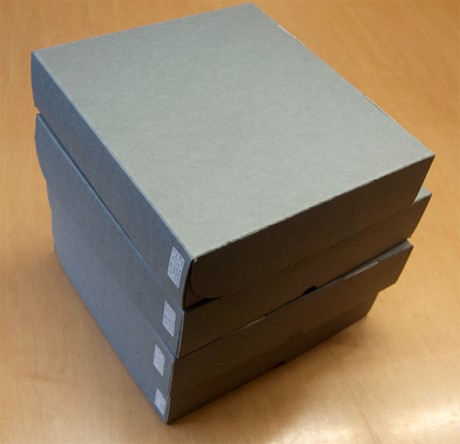
The four phase boxes which hold the PPAI archive
The PPAI archive consisted of 1,462 negatives in four phase boxes. Each phase box was split into ‘batches’ and each batch contained on average 15 medium format negatives. Each batch also contained a contact sheet for these negatives and a corresponding A4 sheet with information for each negative. This information detailed the photographer, newspaper, shutter speed and various other technical aspects for each negative.
This was a good start until we realised that there seemed to be no apparent pattern to indicate why each batch of 15 negatives was grouped in such a manner. The problem was practical in that when documenting an archive, ideally there should be a systematic recording of the contentents, using clearly defined parameters and keywords. This is particularly fundamental in relation to the NPA as part of its policy and remit is to increase access to its collections.
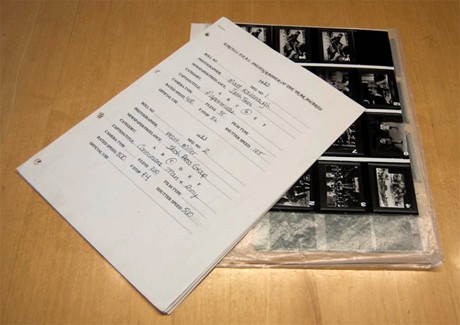
A PPAI archive 'batch' - negatives, contact and information sheets
The challenge here was that we had a collection spanning 15 years, with over a hundred photographers, 1,462 negatives of images from 1978 to 1993, the vast majority of the images relating to Irish culture – sporting events, political personalities, celebrities, musicians, people at work… yet there was no identifiable system to their ordering. It is important to note here that the physical integrity of an archive must be understood before it is re-housed for public use. Typically this raised a few problems, as single photographs are easily placed in protective covers and filed for accessibility. Yet we were faced with an unusual physical barrier, each of these 105 batches was placed in a non-consecutive order, plus negatives within each batch were similarly non-consecutive. Also, the constituents of each batch – a contact sheet, negatives and a few A4 sheets of paper – were stapled together. To decipher an archive, you must respect its original physicality, however tempting it is to re-order its contents, otherwise important information and knowledge may be lost.
Although the PPAI archive contains photographs, the sheer amount of images to be assessed meant that essentially I was dealing with data, trying to correlate differing pieces of information, searching for patterns and attempting to solidify theories about the system of batching. A process of elimination led from one theory to the next, the method being that any application must be consistent across all batches and negatives before re-housing could commence.
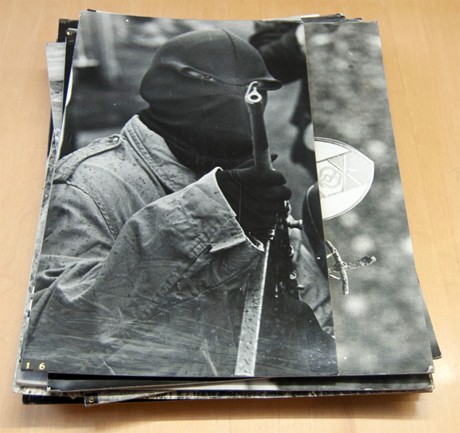
40 black and white A2-sized prints from the PPAI archive
It was at this stage that I assessed 40 black and white A2-sized prints from the 1979 PPAI competition. Each print had similar information on the back, as detailed on the A4 sheets, including a category, labelled by letter from A to F. This ‘code’ was the key to figuring out a possible systematic way of grouping this archive into distinct parts in an effort to make it navigable, yet we still had no ‘key’ to this lettering system. Given the lack of information supplied with the archive, I spent some time navigating through the online newspaper archive of the Irish Times, searching for any articles relating to the PPAI from 1978 to 1993. Finally I discovered one article that revealed the category titles and their corresponding letters. In 1989 the PPAI competition was broken down into: A-Sport, B-News, C-Features, D-People, E-Individual Study and F-Picture Essay. We could now look at this archive in a new light.
At the beginning of the module I decided to email the PPAI secretary, Kate Horgan, to see if she could shed some light on the collection. Although 20 years had passed since the final year documented in the archive, I hoped that some insider knowledge could help us out. Thankfully Kate replied and was interested in sharing her experience as member and secretary of the PPAI. She brought along a number of catalogues from PPAI annual exhibitions into the NPA in Temple Bar. These corresponded with the categories in the Irish Times article and helped confirm and quantify my findings. It was great to talk to someone directly involved in the PPAI as many puzzling questions were answered.
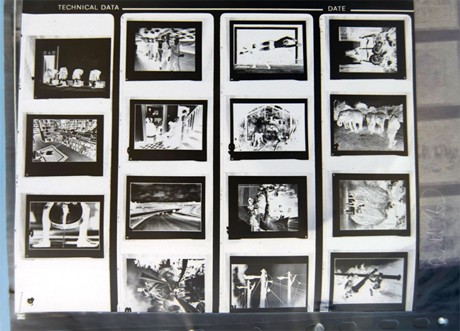
A contact sheet from the PPAI archive
Carroll’s, the tobacco company, had sponsored the PPAI annual exhibition between 1978 and 1997. Some years it was hosted in their premises and to our knowledge, the company kept the exhibition prints, which averaged 100 a year. It seems that they moved premises, were bought out and in the process it was most likely that stacks of photographs were unintentionally rearranged. Due to the passing of time, the facts remain unclear, yet it is evident that it was not realised that one day these images would be of historical significance.
As part of the module Elizabeth asked for my input in discussing a viable strategy to list the archive. I put forward the proposal that all negatives with sufficient information in the PPAI archive could be digitally listed on the NLI's online Virtua catalogue and that negative by negative would be re-labeled, in its current physical state. Due to the fact that the negatives were incorrectly numbered, a new system of numbering would be established, therefore making any image searched on the online database retrievable with minimal confusion within the physical archive.
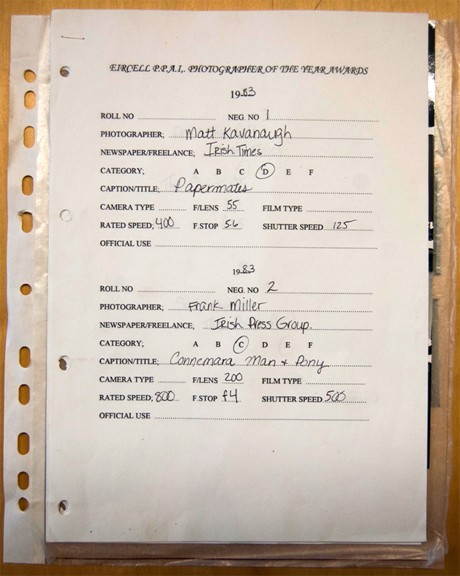
Information sheet detailing the entries submitted by photographers Matt Kavanagh and Frank Miller to the 1983 Eircell PPAI Photographer of the Year Awards
I thoroughly enjoyed the investigative aspect of appraising the PPAI archive. Although it was unexpectedly laborious and frustrating at times, it was very rewarding to see that the efforts paid off and, after 12 weeks’ work, the foundations for creating a more accessible collection were set out. It is satisfying to know that many years of historically important photojournalism will be more accessible in the near future. This kind of work, carried out at the NPA, is essential in preserving Irish cultural identity and a visual link to the past.
